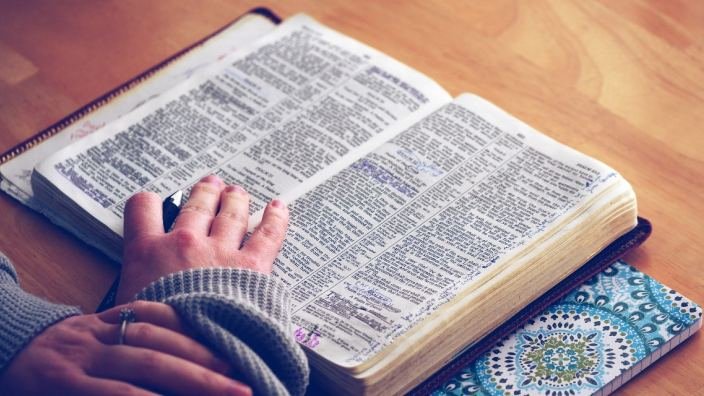Reading the bible is different for me than reading any other book. For me, the bible is primer, resource, encyclopedia, novel, companion, dissertation, love letter, adventure, gateway, mini-series, drama, history and personal journal…at least for starters! So I approach the bible with awe, with curiosity, with innate trust, with reverence, with passion, with intellect and reciprocal engagement. For me, the goal is what the medieval theologian Anselm of Canterbury articulated so well in his famous motto, Fides quaerens intellectum, Faith seeking understanding. And perhaps sometimes, understanding seeking some more faith! Here are some techniques for bible reading I have found profitable, and hope one or more may help you too encounter the living Word!

- Study. I come closer to Christ when I study. I am a life-long student of scripture, the world in which it was birthed and the God who authored it. Bible study is not restricted to some elite cabal of uber-intellectual academics, God forbid! We can and should engage scripture with every linguistic, historical and evaluative tool in our toolbox! That’s why I use study bibles when I teach and study myself, chock-full of notes, outlines, maps, and reflections from those far more educated than I am. Reading scripture through study is to take one book, or one author, and learn as much about that text as one possibly can, as if you were preparing to meet the author.
- Contemplation. Saint Ignatius of Loyola, founder of the Jesuit order, pioneered a dynamic biblical engagement in his epic work Spiritual Exercises. He led his retreatants into a biblical story slowly, reading it more than once, and then asked them to place themselves imaginatively into the story itself, as if they were standing right next to Jesus as He taught the Beatitudes or walked upon the water or trudged up the Via Dolorosa stumbling under the crushing weight of the crossbar. They were to feel the Holy Land’s hot sun beating down upon them, wipe the dust from their faces, feel the fishing nets straining against the sudden weight of the miraculous draught of fish before eating with Jesus on the Galilean shore, and so on. As a visual learner and a storyteller, this technique first aided me in preaching sermons and I absolutely love it!
- Lectio Divina. (A pet peeve here…classical Latin was pronounced only with hard consonantal diction thus the proper pronunciation of the first word is LEK-tee-oh and not the current trendy, hard to listen to LEX-ci-oh. Sorry but 4 years of brutal Jesuit High School Latin still predominates!) Definitely for the more reflective amongst us! This ancient technique developed in early Judean and Sinaitic monasteries where there were no personal biblical scrolls and uneducated monks could not read. So they listened to the brothers who could as they read scripture stories out loud several times. After each recitation monks would speak their impressions about what they heard. The key to lectiois Christ, so unlocking the message of the text is centered upon what insight the passage provides about Jesus. As lectio developed it became more complex, with layering for initial reading, meditation, prayer and contemplation. But at root the simple lectio is to read scripture out loud and see where it lands, where it pricked our attention, where it draws us closer with curiosity, and what it reveals to us about Jesus.
One might suspect in this brief tripartite summary that biblical techniques for reading might closely parallel archetypal personality traits developed centuries after these venerable techniques were canonized, as if certain personalities are instinctively drawn towards certain methods to approach scripture. And one would be correct! There is no singular “right” way to read the bible, and the goal of course is not simply to read a text, but to have the text read us, search us, refine and prune and re-shape us. So study, contemplate, and lectioaway my friends!
- Try one of these biblical reading techniques for the next week on a daily basis.
- Then try a second one the week after.
- Then…well, you get the idea! Enjoy and let me know how you experience these!
Blessed Lord, who caused all holy Scriptures to be written for our learning: Grant us so to hear them, read, mark, learn, and inwardly digest them, that we may embrace and ever hold fast the blessed hope of everlasting life, which you have given us in our Savior Jesus Christ; who lives and reigns with you and the Holy Spirit, one God, for ever and ever. Amen.



